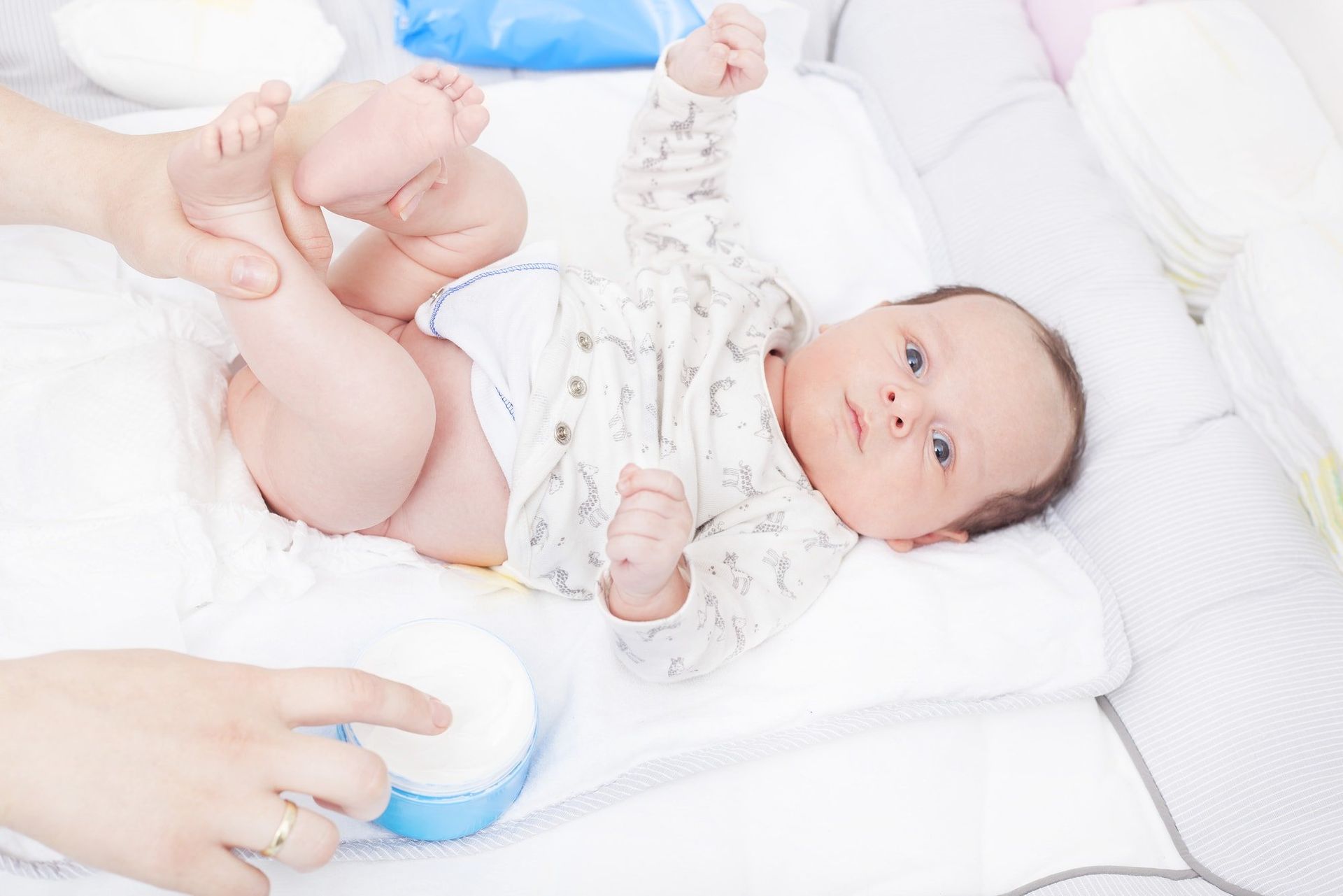Diaper Rash
Most babies get diaper rash, but it is usually not serious. Read on to find out more about what causes diaper rash and how to treat it.
What is diaper rash?
Diaper rash is any rash that develops inside the diaper area. In mild cases, the skin might be red. In more severe cases, there may be painful open sores. It is usually seen around the groin and inside the folds of the upper thighs and buttocks. Mild cases clear up within 3 to 4 days with treatment.
What causes diaper rash?
Over the years diaper rash has been blamed on many causes, such as teething, diet, and ammonia in the urine. However, we now believe it is caused by any of the following:
- Too much moisture
- Cha ng or rubbing
- When urine, stools, or both touch the skin for long periods of time
- Yeast infection
- Bacterial infection
- Allergic reaction to diaper material
When skin stays wet for too long, it starts to break down. When wet skin is rubbed, it also damages more easily. Moisture from a soiled diaper can harm your baby’s skin and make it more prone to chafing. When this happens, a diaper rash may develop.More than half of babies between 4 and 15 months of age develop diaper rash at least once in a 2-month period. Diaper rash occurs more often when: - Babies get older—mostly between 8 to 10 months of age.
- Babies are not kept clean and dry.
- Babies have frequent stools, especially when the stools stay in their diapers overnight.
- Babies have diarrhea.
- Babies begin to eat solid foods.
- Babies are taking antibiotics, or in nursing babies whose mothers are taking antibiotics.
When to call the pediatrician
Sometimes a diaper rash needs medical attention. Talk with your pediatrician if:
- The rash does not look like it’s going away or gets worse 2 to 3 days after treatment. (See “What can I do if my baby gets diaper rash?”)
- The rash includes blisters or pus- lled sores.
- Your baby is taking an antibiotic and has a bright red rash with red spots at its edges. This might be a yeast infection.
- Your baby has a fever along with a rash.
- The rash is very painful. Your baby might have a skin condition called cellulitis.
What can I do if my baby gets diaper rash?
If your baby gets a diaper rash (and to prevent future diaper rashes) it’s important to keep the area as clean and dry as possible. Change wet or soiled diapers right away. This helps cut down how much moisture is on the skin.
- Gently clean the diaper area with water and a soft washcloth. Disposable diaper wipes may also be used. Avoid wipes that contain alcohol and fragrance. Use soap and water only if the stool does not come off easily. If the rash is severe, use a squirt bottle of water so you can clean and rinse without rubbing.
- Pat dry; do not rub. Allow the area to air-dry fully.
- Apply a thick layer of protective ointment or cream (such as one thatcontains zinc oxide or petroleum jelly). These ointments are usually thick and pasty and do not have to be completely removed at the next diaper change. Remember, heavy scrubbing or rubbing will only damage the skin more.
- Do not put the diaper on too tight, especially overnight. Keep the diaper loose so that the wet and soiled parts do not rub against the skin as much.
- Use creams with steroids only if your pediatrician recommends them. They are rarely needed and may be harmful.
- Check with your pediatrician if the rash
- Has blisters or pus-filled sores.
- Does not go away within 2 to 3 days.
- Gets worse.

Great News! We are now using a text messaging system to remind you of your child's appointments. When you receive the text, please click on the link to confirm the appointment. For any questions feel free to contact the office.
Address
East
11026 Vista Del Sol Dr.
El Paso, TX 79935
915-593-5444
West
3901 N Mesa St.
El Paso, TX 79902
915-838-0100
After Hours Answering Service
(915) 593-5444
All Rights Reserved | Pediatric Health Center
All Rights Reserved | Pediatric Health Center

